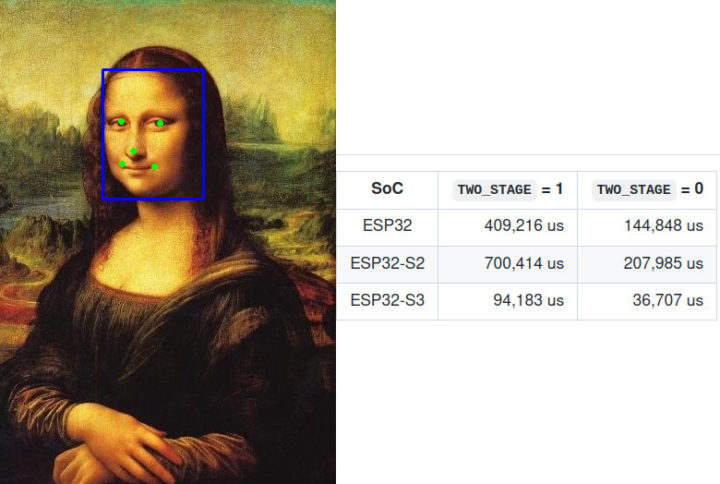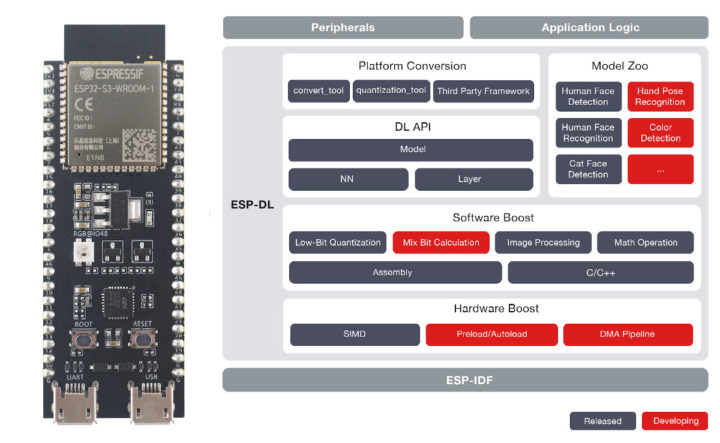ESP32-S3 is the first Espressif wireless processor with AI instructions, and ESP-DL library for ESP-IDF allows you to easily leverage those AI instructions using boards such as the ESP32-S3-DevKitC-1.
The ESP-DL library provides APIs for Neural Network (NN) Inference, Image Processing, Math Operations, and Deep Learning Models that make full use of ESP32-S3’s AI instructions with a 16-bit face recognition model running 6.25 faster, while the 8-bit model is 2.5 times faster than without acceleration.
The ESP-DL library can be used as a project component. For instance, it can be used as a submodule of ESP-WHO computer vision framework, by simply copying it to the esp-who/components/ directory.
The Model Zoo contains several pre-trained models for (human) face detection & recognition, and cat face detection, with more being developed including color detection and hand-pose detection.

Espressif Systems also provides tools to use your own models, and a convention tool allowing you to use models developed for TensorFlow, PyTorch, MXNetm, and others.
There may be even higher performance in the future, as besides acceleration with SIMD instructions, ESP-DL will be further developed with autoload/preload as well as DMA engine support to manipulated the data faster.
You’ll find the code, samples, and documentation on Github. The tricky part will be to get the ESP32-S3, as right now you’d need to request a sample directly from Espressif Systems. ESP32-S3 modules and development boards are slated to become available before the end of the year.

Jean-Luc started CNX Software in 2010 as a part-time endeavor, before quitting his job as a software engineering manager, and starting to write daily news, and reviews full time later in 2011.
Support CNX Software! Donate via cryptocurrencies, become a Patron on Patreon, or purchase goods on Amazon or Aliexpress





